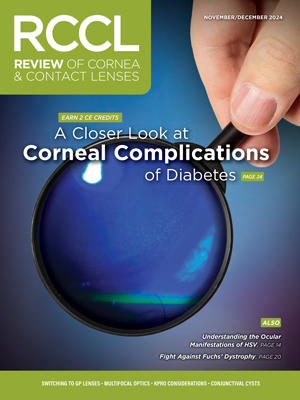 |
Our last issue outlined why someone in clinical practice might consider doing research. To briefly review, this expands access to new products and testing capabilities, advances innovation, boosts your knowledge by helping you to stay up to date with developing technology, potentially increases patient retention rates by supporting practice reputation and adds financial compensation. Let’s now look at what you can do to enhance your chance of getting noticed and how to take full advantage of those opportunities.
How Does One Successfully Get Involved in Research?
Here are some insights I’ve gathered:
1. Find a research mentor. Much depends on where a clinician is in their career and practice setting.1 It’s important to find an influential mentor. I got involved early in my career; our senior partner had been involved in research for decades and was willing to pass on his expertise. Mentors can introduce you to collaborators in the industry.2 Establish good rapport with industry, starting with company sales representatives. They can convey to the manufacturer’s research team who is a good fit for doing marketing studies or even FDA pre-market approval studies.
The ideal clinical investigator mentor must have good communication skills, be organized and have at least some experience with data analysis and statistics.2-4
2. Partner with research teams dedicated to handling the logistics.2 This allows non-university/non-academic providers the luxury of not significantly interfering with clinical duties. The American Academy of Optometry formed a special interest group dedicated to “Fellows Doing Research.” Their mission is to pose interesting research questions and how to best go about answering provocative questions through research in clinically based practices. Every other year, the Academy sponsors a “research camp.” The program trains interested individuals in the concepts and techniques necessary for multi-centered observational community-based research.5
3. Seek adequate training. Clinicians must be willing to undergo the necessary training when accepting a research project. You’ll also have to manage audits and inspections.1
4. Commit to the necessary infrastructure.1 This will require a staff member to serve as the study coordinator who will handle the recruitment aspects, schedule visits, complete necessary paperwork, answer patient questions, etc. Remember, study patients generally need longer time slots. Keep things simple for your neophyte team since some trials require a lot of paperwork and time. Compliance with regulatory bodies and sponsor requirements can initially be daunting.3
5. Commit to assurance for a suitable, safe study site.2,3 Secured rooms and storage space are always needed. Necessary equipment might include refrigerators or extra space for storage of study supplies and study data.1,4
Depending on your level of participation, there will be several challenges along the journey. With greater involvement, challenges include first developing an appropriate research question, generating adequate data to answer the question with standardized testing, interpreting findings and eventually implementing the findings in clinical practice.3 If called for, other challenges in human subject studies include working with an institutional review board (IRB) and staying fully engaged throughout the process.2-4 The IRB ensures that appropriate steps are taken to protect the welfare and rights of participants in a study. Depending on the study design and recruitment requirements and necessary follow-ups, the study sponsor or institution doing the research may provide a centralized IRB.
Take a close look at what’s available for those who might be interested in doing research in clinical practice. You may want to start slowly with something like a marketing study sponsored by a product manufacturer and advance as you deem workable for your practice. I would suggest taking advantage of the programs available through our professional organizations, such as “research camps.” Should you have any questions on why you might want to do research in clinical practice and how to get started, please share them with us!
1. Lazas D. Five reasons physicians should integrate clinical trials into their practice. Applied Clinical Trials. www.appliedclinicaltrialsonline.com/view/5-reasons-physicians-should-integrate-clinical-trials-into-their-practice. July 31, 2023. Accessed August 1, 2024. 2. Lazas D. How integrating clinical trials into private practice can benefit both patients and physicians. Pharmacy Times. www.pharmacytimes.com/view/how-integrating-clinical-trials-into-private-practice-can-benefit-both-patients-physicians. May 9, 2023. Accessed August 1, 2024. 3. Obrenović Ž. Doing research in practice. Research & Practice. 2014;20(4):15-7. 4. Physician side gigs and nonclinical careers. Physician Side Gigs. www.physicianansidegigs.com/clinicalresearch. Accessed October 1, 2024. 5. Fellows Doing Research SIG. American Academy of Optometry. aaopt.org/membership/sections-special-interest-groups-alt/fdr/. Accessed October 1, 2024. |


